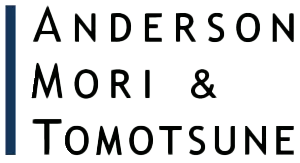- within Consumer Protection topic(s)
Introduction
M&A Trends and Merger Control
M&A volume in Japan have been on the rise in recent years. In addition to traditional acquisitions of mature companies and businesses, M&A transactions involving platformers, AI companies, and other tech-related or data-oriented businesses are growing at remarkable speeds. Despite the Covid-19 pandemic, the number of M&A transactions and investments targeting innovative businesses, including tech-giants like LINE and various startups, have been robust.
This brings merger control into focus. Merger control is an important aspect of M&A and requires close consideration from the early stages of a transaction, since transaction closing cannot be achieved without clearance from the relevant competition authority.
Evolution in Merger Control
It is not always easy to evaluate the impact of a proposed transaction on fair market competition based on the relevant regulatory framework, such as in transactions involving tech- or data-driven businesses. Moreover, certain aspects of such transactions are not clearly captured by the mandatory merger filing requirement, like in cases involving acquisition of experimental and uncommecialized technologies, research results, or big data. Such concerns have prompted a re-assessment of existing merger control regimes worldwide, such as in Germany, where a new mandatory merger filing threshold focusing on the value of transactions has been introduced.
In line with this global trend, the Japan Fair Trade Commission (the "JFTC") has also updated its guidelines and statutory rules on merger filings in 2019. This has resulted in major transformations to merger control in Japan. Foreign investors contemplating investments into Japan should therefore be mindful of these developments.
What to Know about the Merger Control Regime in Japan
Overview
The merger control regime in Japan was introduced in 1947 with the enactment of the Japanese Antimonopoly Act (the "AMA"), which, together with related rules, form the primary bedrock of legislations regulating competition in Japan. The JFTC was also established as an independent administrative agency with broad enforcement powers on matters of merger control and competition in the Japanese economy. Headed by a chair and four commissioners, the JFTC has primary regulatory oversight on enforcement of the merger control regime under the AMA.
Mandatory Filing Requirement
The AMA requires the filing of a mandatory prior notification to the JFTC for a variety of M&A transactions with different domestic turnover thresholds. For instance, notification is required in share acquisitions that meet all of the following thresholds:
- the total domestic turnover of the acquiring company, its subsidiaries, its ultimate parent company and all subsidiaries of the ultimate parent company (collectively, the "acquiring group") exceeds JPY 20 billion;
- the total domestic sales revenue of the target company and its subsidiaries exceeds JPY 5 billion; and
- post-acquisition, the voting rights in the target company held by the acquiring group will exceed 20% or 50% of the total voting rights in the target.
Foreign-to-foreign mergers are caught by the AMA in the same way as domestic mergers if such transactions will affect the Japanese market, and will equally be subject to the filing of a mandatory prior notification.
Review Procedure
Upon the formal filing of a prior notification with the JFTC, the parties will be prohibited from giving effect to the notified transaction until the elapse of a 30-calendar-day review period ("Phase I Review"). The JFTC may shorten the Phase I Review period in response to a formal request. Such review period cannot, however, be extended. Accordingly, a review will automatically proceed to a second phase ("Phase II Review") in situations where the JFTC fails to complete its review by the close of the Phase I Review period. The Phase II Review process will begin with receipt of a voluminous questionnaire from the JFTC, and will continue until the expiry of the later of (i) 120 calendar days from the date on which the JFTC received formal notification of the proposed transaction, or (ii) 90 calendar days from the date on which the JFTC confirms it has received all required information on the proposed transaction.
The JFTC may make its clearance conditional upon the parties taking steps, generally known as remedies, to address the JFTC's concerns. Structural remedies (such as divestiture of business) are the most effective remedies, but behavioral remedies are also acceptable where appropriate. Transaction parties are also free to propose remedies to the JFTC at any stage of its review, including at the pre-notification stage, when such proposals are fitting. The JFTC will conduct its review on the assumption that proposed remedies will be implemented.
To avoid the lengthy and cumbersome Phase II Review process, it would be advisable as a practical matter to hold prior consultations with the JFTC well in advance of a formal filing. Although pre-filing consultations are common in many jurisdictions, the pre-notification consultation system in Japan differs from that of many other jurisdictions in terms of the depth of feedback the JFTC may provide in the early stages. Under the pre-notification consultation system in Japan, parties will be able to approach the JFTC to discuss and resolve, to the extent practicable, potential issues, concerns and questions that the JFTC may have, in advance of filing a formal notification. This will facilitate case clearance within the Phase I Review period.
Recent Trend and Pointers
Voluntary Consultation with the JFTC
Unlike in Europe, the JFTC is authorized to review an M&A transaction that does not meet the mandatory filing requirement (Article 10 (1) and (2) of the AMA). In practice, parties to a potential M&A transaction would voluntarily consult with the JFTC if the transaction appears to involve substantial competition concerns, even if the transaction does not technically meet the mandatory filing requirement ("quasi-filing consultation").
Based on recent amendments to the merger control regime, the JFTC recommends for the parties to a potential transaction to engage in voluntary consultation with the JFTC if the total deal value is expected to exceed JPY 40 billion, and if certain other requirements indicating a local nexus of the proposed transaction to Japan are met. The JFTC has also re-affirmed that it will review M&A transactions that could potentially affect domestic competition.
Indeed, the JFTC has recently been conducting ex-post facto reviews of M&A transactions that do not meet the mandatory filing requirement. Brief information on such reviews are set forth in the following table:
| Date of Publication | Parties and Transaction | JFTC's Decision |
| October 24, 2019 | Acquisition of Nihon Ultmarc (a medical information database business) by M3 (a pharmaceutical information platform business) |
|
| January 14, 2021 | Google's acquisition of Fitbit |
|
The JFTC's investigation of an M&A transaction that does
not meet the mandatory filing requirement should not be seen as a
mere theoretical possibility. Investors could potentially be
wrong-footed if they exclude Japan from those jurisdictions
requiring merger filing simply on the basis that the domestic
turnover of the Japanese companies involved is small.
Theory of Harm
In merger reviews, market share is a widely accepted indicator for analysis of the competitiveness of the companies involved. The merger control regime in Japan provides for a safe harbor exemption from a substantive merger review if certain market-share-based safe harbor criteria are met. Following the recent amendments to the regulatory framework, however, the JFTC now seems intent on examining competition in the market on a more proactive, case-by-case basis. What this means is that even if a case meets the safe harbor criteria, it will be subject to the JFTC's review if it involves a high level of potential competition issues that are not reflected in market share, such as a case concerning competitively sensitive data or assets (like intellectual property).
Analysis of mechanisms under which data or intellectual property restraints competition in the market (the "theory of harm") is often difficult. Many discussions have been held in Japan on the theory of harm, particularly in the context of pharmaceutical developments. Nevertheless, the relationship between R&D and competition is not clear-cut. The theory of harm has been explored in various cases in Japan. In the digital platform market, the theory of harm was considered in the Nihon Ultmarc/M3 and Google/Fitbit cases mentioned above, as well as in the integration of LINE and Z Holdings. The latter is a particularly meaningful and insightful case in which the JFTC focused on the accumulation of data as the theory of harm and concluded, especially in relation to code payment businesses (such as PayPay and LINE Pay), that they cannot exclude the possibility that fair competition in the relevant market will be harmed due to the volume, scope and frequency of data collection by the integrated entity.
Recommendable Approach
The recent amendments in the merger control regime of Japan suggests the need for a new approach in assessing the necessity of prior examination of transactions and competition concerns. It has become increasingly important not only to analyze financial data in proposed M&A transactions (such as data relating to domestic sales and asset values, and the market share of each entity in a group of companies involved), but also to consider the substance of the transactions. Substantive considerations would include matters such as the presence of the business of each group of companies involved, the synergy expected to be achieved from the transaction, and whether there are circumstances that could result in substantial restrictions on competition. In particular, synergy, which is expected to enhance the competitiveness of companies involved in an M&A transaction, is an important factor that the competition authorities will pay attention to in their review.
The recent amendments in the merger control regime of Japan and the trend of merger control practices underscore the importance of close cooperation between businesses and their legal counsels from the early stages of an M&A transaction or investment, to ensure a successful conclusion of the transaction.
The content of this article is intended to provide a general guide to the subject matter. Specialist advice should be sought about your specific circumstances.


